Best Dispersed Camping in Oregon: My Favorite Hidden Spots and How You Can Enjoy Them Too
There’s something about heading into the wild and finding our own quiet spot under the Oregon sky. The sense of freedom that comes with dispersed camping? It’s hard to top.
We get to skip the crowds and soak up the peace, beauty, and wildness of this amazing state all to ourselves.
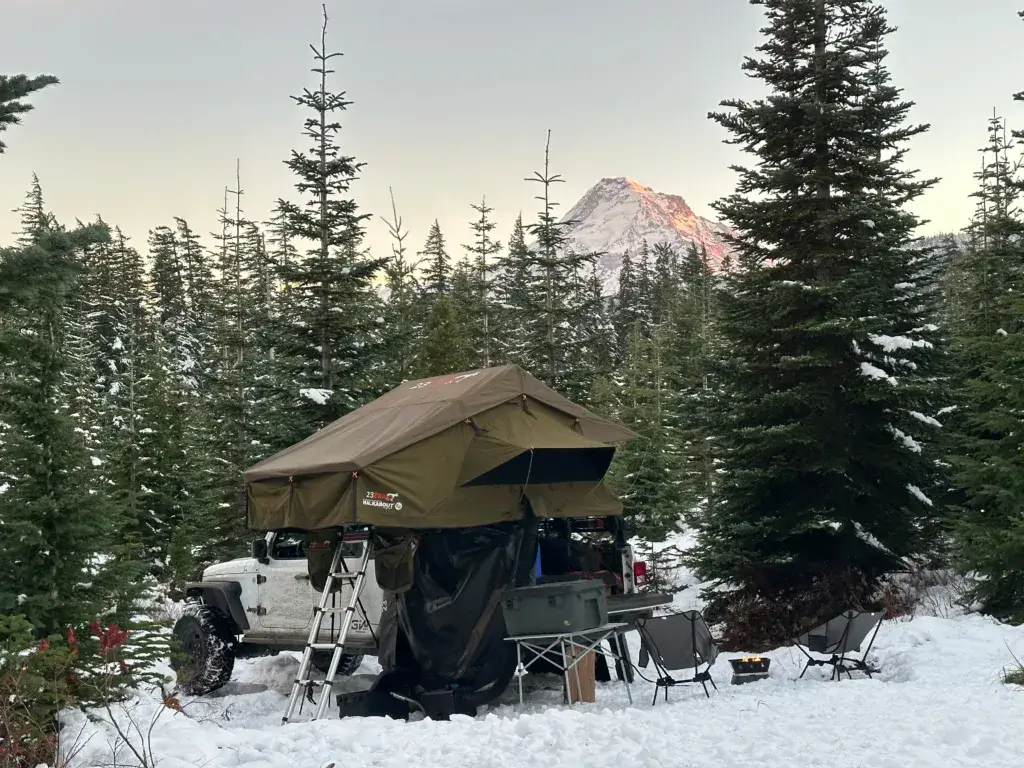
Let’s help each other discover the best dispersed camping spots in Oregon so every adventure feels new.
We can swap stories, share tips, and maybe even find a few new favorite places along the way. Ready to pack up and hit the trails?
1) Mount Hood National Forest for epic mountain views and tons of trails
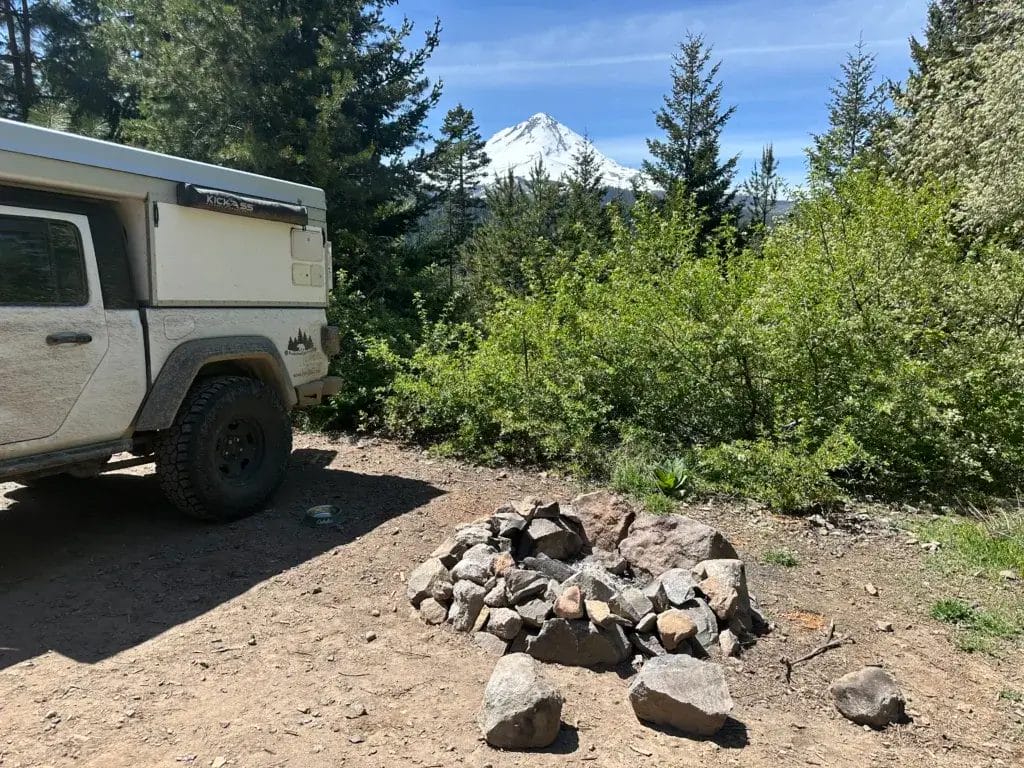
If we want dispersed camping with a view, Mount Hood National Forest calls our names. There’s nothing quite like waking up to the first daylight hitting Mount Hood’s snowy peak.
We can find tucked-away spots in the woods or along forest service roads, which means plenty of privacy and space to relax. Miles of trails start right from many campsites, so we can stroll to a lake or tackle a longer trek up a ridge, whatever the mood calls for.
Sometimes wildflowers pop up, or we stumble onto a viewpoint we never expected. It does get busy, especially on weekends, so getting there early or picking a less popular area ups our chances for real peace and quiet.
These sites are all pack-it-in, pack-it-out. We need to take everything with us and help keep the forest beautiful for whoever comes next.
Want more details or specific sites? Reviews for dispersed camping near Mount Hood National Forest are super handy.
Here are a couple of our favorite areas:
Lolo Pass Road (NF-18): Multiple dispersed sites with views of Mount Hood.
Trillium Lake Vicinity (NF-2656): Some dispersed pull-outs, though they can fill fast in summer (Beyond the Tent).
2) Tillamook State Forest if you have a 4WD for those serene forest spots

If we’re after quiet and wild, Tillamook State Forest might just be the ticket. It sprawls out just west of Portland, giving us room to spread out under those tall trees.
The best part? We can find free dispersed camping here if we’re willing to look.
Most of the best spots hide well off the main roads, so having a 4WD helps. We can crawl along those rougher trails, searching for that perfect, private nook among the pines.
There’s something about the sound of the wind in the branches that makes the world feel small and calm. With over 250 miles of off-highway vehicle trails, there’s no shortage of exploring, whether we’re into quads, dirt bikes, or just hiking where most people never go.
Evenings can be magic, especially if the sky puts on a show for stargazing. We can stay up to 14 days at a time, so it’s easy to really unwind.
If we want to double-check the rules or need directions, the Tillamook Forest Center is a good place to call.
A couple of our favorite areas to explore:
Cook Creek Road (NF-1050): This is a well-known dispersed camping road, but it’s narrow and best for smaller vehicles.
Nehalem River Area: Forest roads along the Nehalem River offer pull-outs and riverside camping, but access can be rough and may require a high-clearance vehicle (The Dyrt).
3) Crater Lake area for stunning lakeside dispersed camping

If we want to camp somewhere that really knocks our socks off, the Crater Lake area is a no-brainer. Waking up to cool air and sweeping blue views of Oregon’s deepest lake? That’s the stuff.
We can find great dispersed camping spots just outside the park boundary, especially near Forest Road 70 off State Highway 138. These sites let us sleep among tall pines and get easy access to the park the next day.
If we’re up for more adventure, the Mount Thielsen Wilderness nearby gives us even more quiet. Camping inside Crater Lake National Park comes with strict rules, if we want to pitch a tent there, we need to be at least a mile from any road or developed area.
Let’s pack out everything we bring in and leave the place just as pristine as we found it. For more details, this handy guide to dispersed camping near Crater Lake is worth a look.
One of our favorite nearby areas:
Winema National Forest, near Slocum Creek: Dispersed sites along NF-60 and NF-62, within 30 minutes of the park entrance.
4) Ochoco National Forest for a quieter, less crowded experience
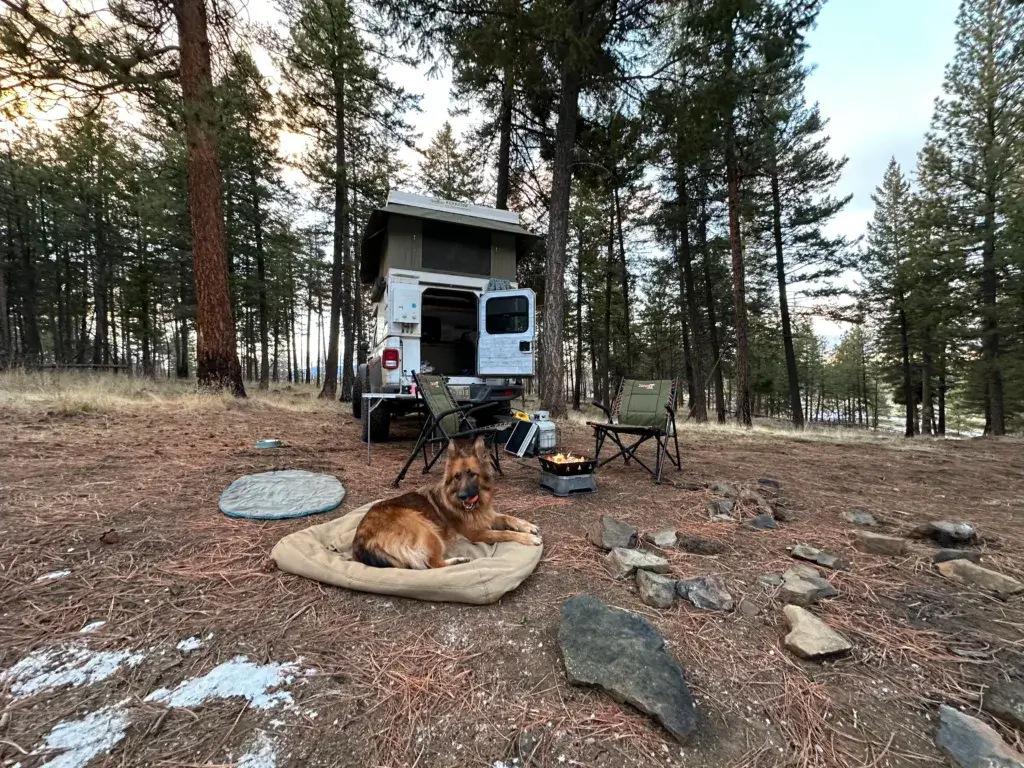
If we want a camping spot where it feels like the forest belongs to us, Ochoco National Forest is tough to beat. It’s tucked away in central Oregon, so crowds are usually lighter here.
We can spread out, breathe deep, and really soak up the calm. Wide open meadows, tall pines, and endless views, this place just moves at a gentler pace.
There are plenty of dispersed camping options in Ochoco, so we can pick our own little slice of nature. Maybe we’ll camp near a creek, or find a quiet spot deep in the woods.
Hiking here is a highlight, with trails that range from easy strolls to longer adventures. On clear nights, the stars feel extra close, almost like they’re winking just for us.
We should pack in everything we need, since services are pretty much nonexistent. But that’s part of the charm.
A favorite area to check out:
Walton Lake Vicinity: Forest roads like NF-22 and NF-4210 offer quiet, wooded sites.
5) Wallowa-Whitman National Forest with beautiful mountain scenery
Let’s head out to Wallowa-Whitman National Forest, where the mountains roll on and on. We’ll find peace in quiet forests, rolling hills, and wide-open meadows.
The mountain air always makes us breathe a little deeper. This forest is huge, about 2.4 million acres, so there’s plenty of room to spread out and find a good spot for dispersed camping.
We can park the car and pitch a tent by a gentle creek or along a quiet dirt road. If we’re near La Grande, the Spring Creek Dispersed Area is a nice, free choice right along I-84, close to Hilgard and managed by the Forest Service.
It’s easy to really connect with nature here, just us, the pines, and the mountains all around. We’ll want to plan ahead, bring what we need, and always stick to Leave No Trace.
For more dispersed spots, check out this guide to dispersed camping near Wallowa-Whitman National Forest.
6) Umpqua National Forest’s diverse spots for a mix of forest and river views
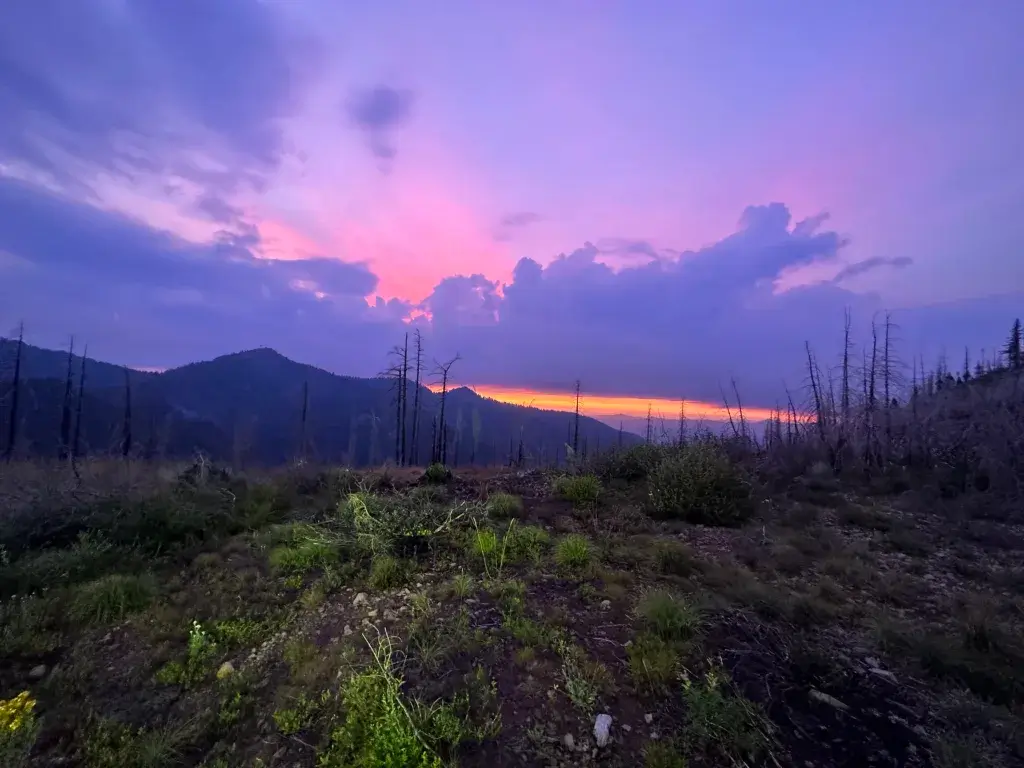
Let’s talk about why Umpqua National Forest makes for great dispersed camping. This place pretty much has it all: dense woods, clear rivers, and peaceful meadows.
We get to pick from plenty of campsites, each with its own feel. Some let us set up right by the North Umpqua River, so mornings can start with the sound of water and a cup of coffee as the mist rises above the trees.
Other spots tuck us beneath towering firs and hemlocks, making it feel like our own private retreat. But a lot of these sites are wild, no bathrooms, no trash cans, and sometimes a swarm of mosquitoes.
We should pack everything we need, including bug spray and plenty of water. Still, that rugged vibe is what makes camping in the Umpqua National Forest feel like a real adventure.
Our favorite areas:
Lemolo Lake Area: Forest roads around Lemolo Lake (like NF-2612) offer several pull-offs for dispersed camping. You’ll be close to the lake and waterfalls.
Toketee Lake: Look for sites along Toketee-Rigdon Road (NF-34). These are near hot springs and the North Umpqua River.
7) Rogue River-Siskiyou National Forest for peaceful river access
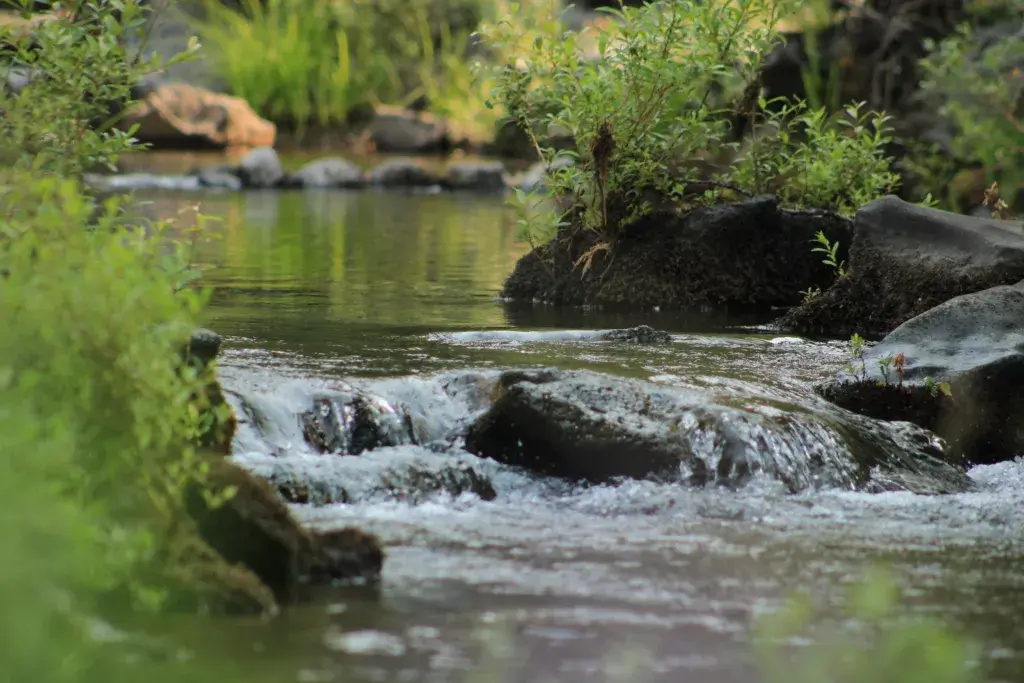
Let’s talk about how special the Rogue River-Siskiyou National Forest is for dispersed camping. We love finding little hideaways along the water, where the river’s sound helps us unwind after a long week.
These spots feel private but are still easy to reach. Exploring the pull-offs along the Elk River is one of our favorite things. Many sites sit close to the shore, so it’s simple to step out and dip our toes or cast a line.
Some nights, we fall asleep to the sound of rushing water just outside the tent. The forest almost invites us in for a real break from screens and noise.
Camping here is pretty casual – just us, our gear, and the hush of the trees. If you want to dive deeper, check out this guide to dispersed camping near Rogue River-Siskiyou National Forest or read about Elk River dispersed campsites.
Check out this area:
Bear Camp Road: Several pullouts and clearings are available for dispersed camping, especially popular with rafters and hikers.
8) Steens Mountain for a unique high desert camping vibe
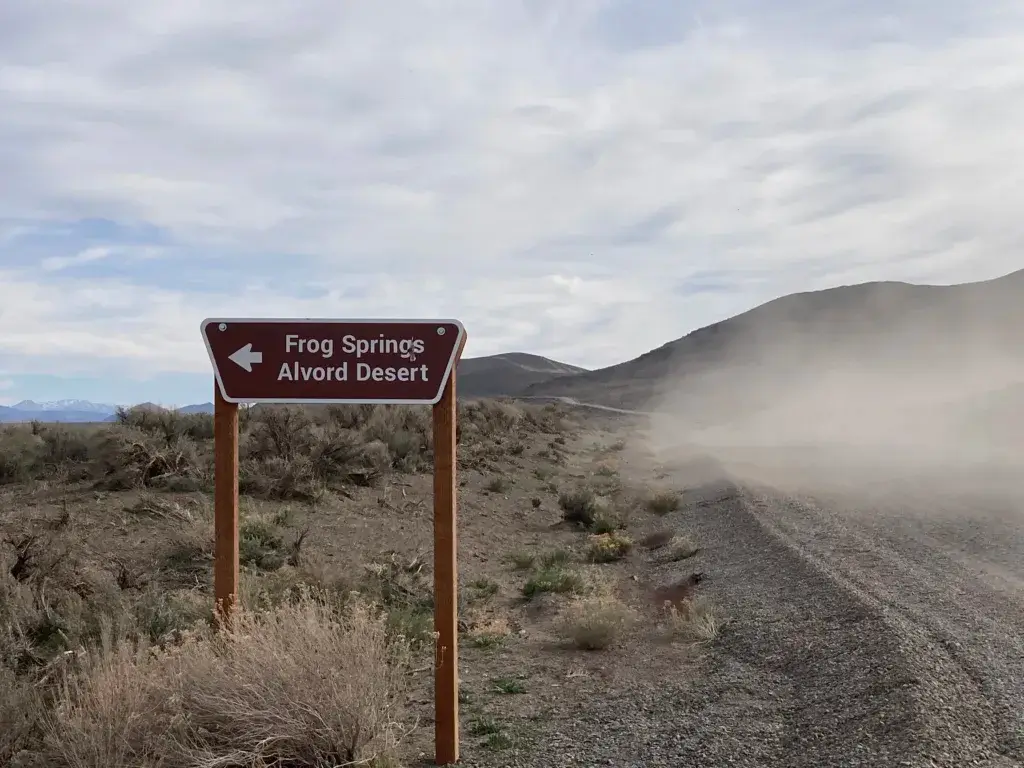
Let’s talk about Steens Mountain, this is our go-to when we’re craving wide-open views and that real quiet. The landscape is just wild: rugged mountains, high desert, and a peace that hits different at sunrise.
Dispersed camping is allowed all over Steens Mountain, so we can pick our own spot, far from anyone else. We just pack in what we need and pack out everything, keeps the place pristine.
Getting here takes a bit of grit, especially if we’re driving the Steens Mountain Loop Road. The roads get bumpy, so having a high-clearance car or four-wheel drive helps, but even a regular vehicle can make it if we take it slow, this guide explains more.
Whether we’re hanging out near Page Springs Campground or wandering deeper into the wilds, Steens Mountain always feels like our own private adventure.
9) Deschutes National Forest offering great spots near the Cascade Range
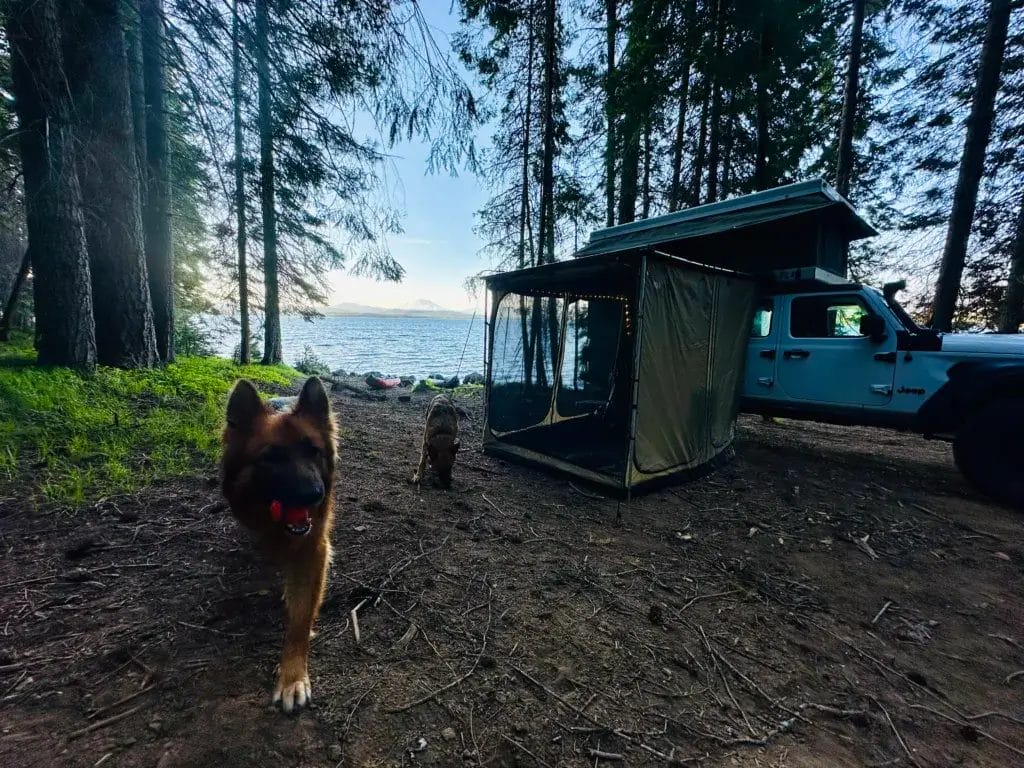
If we’re after peaceful wilderness and mountain views, Deschutes National Forest never disappoints. There’s so much space to spread out, it’s easy to find a quiet spot away from crowds.
Pitching our tent near the Cascades just feels right. With so many forest roads and pull-offs, especially in the quieter corners, we usually get plenty of privacy.
After a long day of hiking or paddling, it’s nice to settle under the pines and just take it all in. We’ll want to stick to basic dispersed camping rules: pack out everything, stay away from streams and meadows, and leave no trace.
The forest is well-loved for its free dispersed camping options, so let’s help keep it beautiful. Waking up to crisp mountain air and a day full of possibilities—can’t beat that.
We spend a lot of time here, our favorite areas are below:
- Cascade Lakes Highway: Try Forest Roads 4635 or 4600-370 near Hosmer Lake for classic high-mountain camping among pines and lakes.
- China Hat Road: Head southeast of Bend on FR 18 and explore the many spur roads for easy-access dispersed camping in the open pine forest. *** UPDATE*** Currently closed for county maintenance – a reopen date is not yet available as of June 2025.
10) Willamette National Forest if you want lush green landscapes
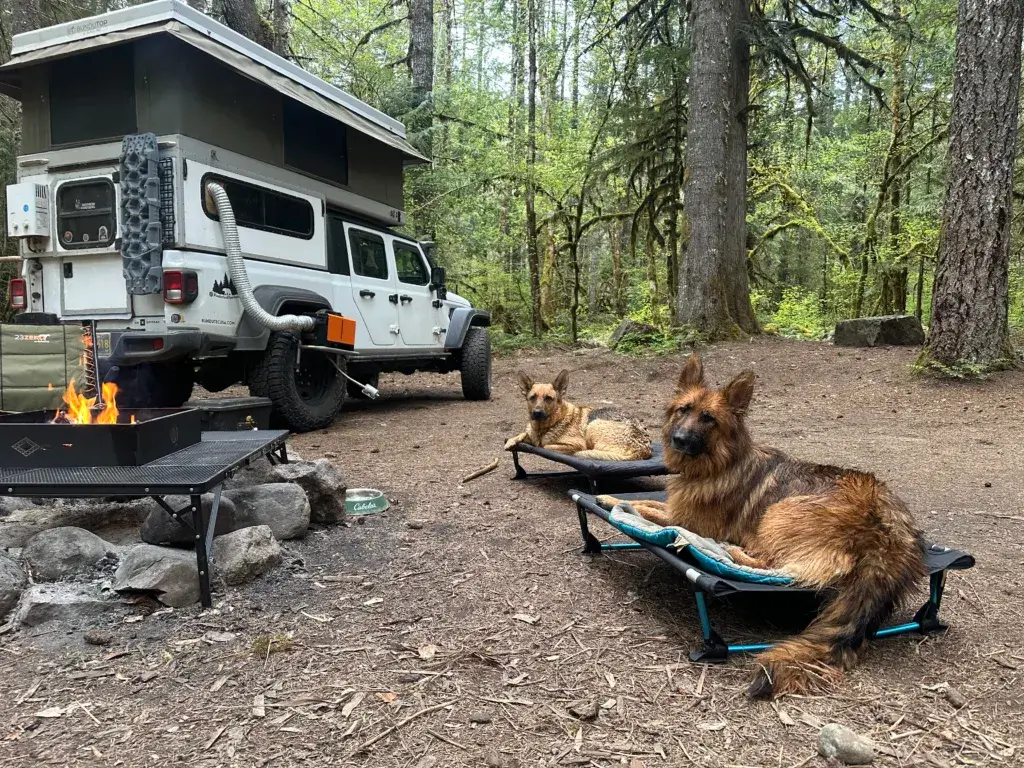
If we’re chasing that true Pacific Northwest vibe, Willamette National Forest is a must. This place is packed with tall trees, mossy trails, and hidden streams that pop up out of nowhere.
We can set up almost anywhere outside developed campgrounds and settle in for the night. There’s tons of room to spread out, with plenty of spots near water or trails.
We just follow the main rules—stay away from marked sites and leave no trace. Waking up to mist drifting through the trees is one of my favorite things; it’s like our own private storybook.
The forest has so much space, we rarely bump into crowds, and the air always smells fresh and green. If we’re new to dispersed camping, planning ahead helps—pack some extra layers because it gets chilly at night.
For more tips or to see where to start, check out details on dispersed camping near Willamette National Forest.
Check out these areas:
Forest Road 19 (Aufderheide Drive): Numerous riverside dispersed sites, especially near Cougar Reservoir and Box Canyon.
McKenzie River Corridor: Look for pullouts along NF-2600, but stay at least 100 feet from water sources as required by forest rules.
11) Painted Hills Dispersed Camping
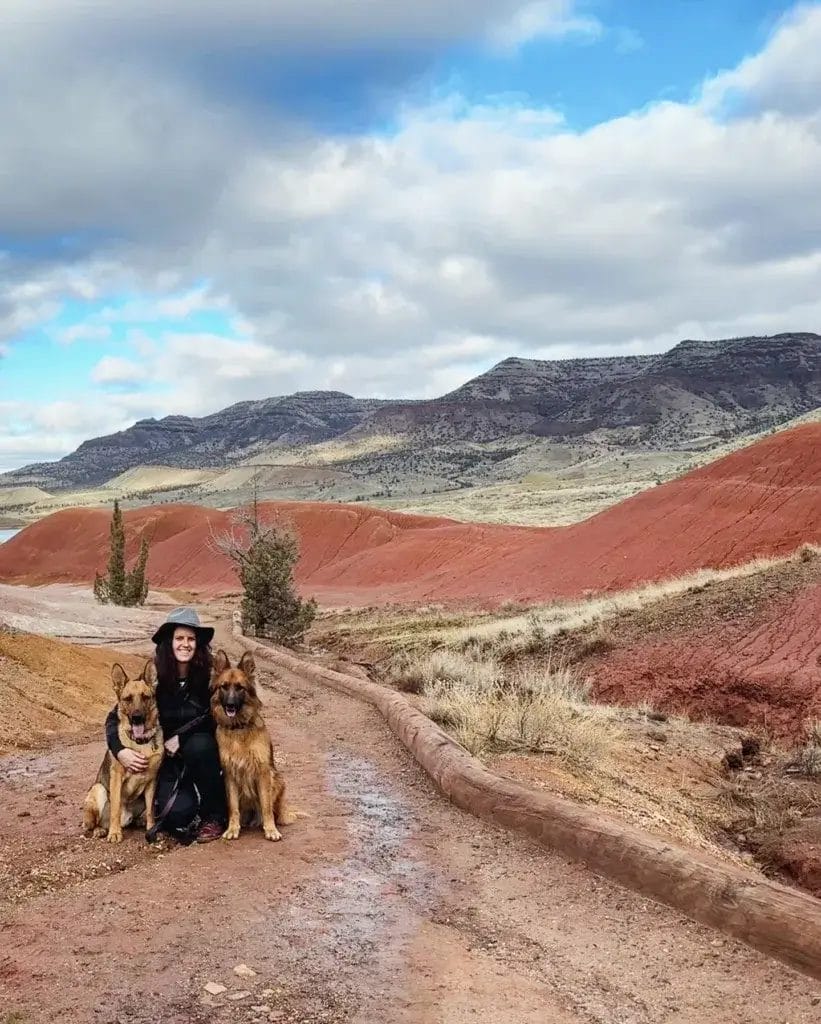
I’m a sucker for nature’s art, and the Painted Hills in Oregon are just wild. These colorful clay hills are jaw-dropping, and camping nearby means you wake up to a view that honestly doesn’t feel real.
A great trail in the area to explore in the area is the Carroll Rim Trail. The stars over the hills at night will blow your mind.
Painted Hills
- Priest Hole Recreation Site: A well-known BLM dispersed site along the John Day River, with GPS coordinates: 44.7811, -119.6342.
12) Owyhee River Dispersed Camping
“Go big or go home,” right? The Owyhee River in southeast Oregon is the ultimate in remote camping. The river winds through red rock canyons and cliffs that make you feel like you’ve landed on another planet.
We’ve found peaceful campsites right on the riverbank. The desert views and total solitude are incredible.
Owyhee River
- Three Forks Recreation Site: Remote, riverside dispersed camping with GPS: 42.5915, -117.1831 (Camino Adventures).
Understanding Dispersed Camping in Oregon
Getting how dispersed camping works in Oregon can make our trips smoother. Knowing the basics and packing the right gear keeps things safe, comfy, and easy on the environment.
The Basics: What to Expect
Dispersed camping in Oregon usually means camping for free outside developed campgrounds, mostly on public lands like national forests and BLM areas. There aren’t any designated campsites – just us, our tent, and the wilderness.
We won’t find running water, restrooms, or trash bins. We need to pack out all our garbage and follow Leave No Trace rules. This includes toilet paper and yes, POOP. Bury it or pack it out. Always pack out your TP! I can’t tell you how many times we’ve found a gorgeous spot only to discover human trash and waste. Please don’t be that person.
Sometimes, finding a flat, safe spot to set up is part of the fun. It’s also smart to check local rules, fire bans, and road conditions before heading out. The TMBtent Guide and The Dyrt’s listings offer updated info on regulations and good places to camp.
Cell signal is hit or miss, so it’s a good idea to download maps in advance.
Essential Gear and Supplies for Your Trip
Packing right really matters. Here’s what we always toss in the car:
- Sleeping gear: warm sleeping bag, sleeping pad, sturdy tent
- Cooking supplies: portable stove, fuel, cookware, food – no campfires if there’s a ban! Propane fire pits are allowed.
- Water: a few gallons or a good filter for rivers and streams, water can be iffy out there
- Navigation: offline maps, compass, or GPS, since trails aren’t marked
- First aid kit: always comes in handy
- Clothes: layers for Oregon’s wild weather, rain gear, and a warm hat
Don’t forget trash bags, a trowel for digging a cat hole, and a headlamp for those pitch-black nights. We like using camping apps like Freecampsites.net or The Dyrt to find new spots.
It’s also fun to just drive around and explore, we’ve found some of our favorite spots this way. With the right gear, we can focus on relaxing and soaking up the peace of Oregon’s forests.
Tips for a Safe and Enjoyable Adventure
We all want to come back from our trip feeling refreshed, inspired, and maybe just a bit more connected to Oregon’s wild spaces. From how we treat the land to how we find our way through unfamiliar forests, a little extra care makes all the difference.
Leave No Trace: Respect Nature & Wildlife
When we’re dispersed camping, the goal is to keep Oregon’s beauty intact for everyone. We always pack out all our trash, even tiny scraps and food bits, so we don’t attract animals or spoil the landscape.
If we build a campfire, we use existing fire rings when possible. During fire season, it’s super important to check for restrictions and stick to campfire rules in Oregon.
We never bathe or wash dishes directly in streams or lakes, and always use biodegradable soap at least 200 feet from water. Wildlife gets plenty of space, too. It’s exciting to spot deer or birds, but getting close to or feeding them just isn’t good for anyone.
Let’s leave everything as we found it, or even better, so the next campers can have the same wild experience.
Navigating Oregon’s Unique Landscapes
Oregon’s landscapes are all over the map, and finding our way isn’t always obvious. We always bring a paper map and compass, since cell service is spotty in most prime dispersed camping spots.
Apps like Freecampsites.net or The Dyrt help us pick a spot ahead of time, but once we’re out there, old-school navigation is a lifesaver. We also love Gaia and OnX maps. Weather can flip fast, especially in the mountains, so we pack layers, rain gear, and plenty of water.
Many forest roads are rough, so a high-clearance vehicle can be a real lifesaver. Before heading out, we let someone know our route and destination, just for peace of mind. Most of these areas don’t have phone service or it’s very spotty.
We make sure to check the rules for each forest since every spot can have its guidelines. Getting to know the area before we go makes the adventure safer and, honestly, a lot more fun.
Frequently Asked Questions
Dispersed camping in Oregon can feel like a treasure hunt, but with a bit of guidance, we can unlock so many beautiful places together. From rugged coastlines to quiet forests, finding a great spot is really about knowing the rules, being prepared, and loving the adventure.
What are the top spots for dispersed camping along the Oregon Coast?
The Oregon Coast doesn’t have endless options, but there are a few true gems. Tillamook State Forest is a personal favorite, especially if you like wandering forest roads close to the ocean.
Some of these roads have tucked-away sites where you can actually hear the trees and maybe even the ocean if you listen hard enough.
We always check the rules for each area before setting up. It’s important to make sure we’re far enough from main highways and trails.
Can you boondock freely in Oregon’s national forests?
Most of the time, we can boondock in Oregon’s national forests without much hassle. Places like Mount Hood National Forest and Ochoco National Forest let us park and camp for free in a lot of spots, as long as we’re not blocking roads or trashing the place.
We try to stick to established spots when we find them. Packing out everything and following local fire rules is just part of the deal.
How do you locate the perfect dispersed campsite in Oregon’s vast wilderness?
We usually start by checking Forest Service maps or using apps like The Dyrt. They’re good for finding those less-traveled pullouts and old forest roads where camping’s allowed.
Sometimes we’ll chat with rangers or other campers, that’s how we hear about the best secret spots. When we get there, we look for flat, already-used spaces to keep our impact low.
What should you know about dispersed camping in the Tillamook State Forest?
Dispersed camping’s allowed year-round in Tillamook State Forest, and you don’t need a permit. A lot of the best campsites are down narrow or bumpy roads, so having a high-clearance vehicle or 4WD helps a ton.
We always follow the Oregon Department of Forestry guidelines to keep things safe and clean. Water isn’t always close, so we haul in plenty, plus a trowel for bathroom needs.
Are there any prime locations for RV-friendly dispersed camping in Oregon?
For RV camping, we’ve had luck near Mount Hood and Wallowa-Whitman National Forest. Some forest roads stay wide and flat enough for bigger rigs, which is a relief.
We make a point to scout ahead, either in person or using camping apps, to make sure the spots aren’t too tight or off-camber for our setup. It’s not always perfect, but that’s part of the adventure, right?
What are the latest regulations for dispersed camping in Oregon?
Dispersed camping rules in Oregon can shift, especially during fire season or after big storms. Most places let you stay for up to 14 days, and you’ll need to camp at least 200 feet away from water sources.
At the moment, you don’t need a permit or pay fees in state forests. Still, I’d always check the official guidelines before packing up the car, just to be sure nothing’s changed overnight.
We all need to keep an eye on campfire bans and posted signs. And honestly, packing out your trash isn’t just a rule—it’s basic respect for the next folks who wander through.








